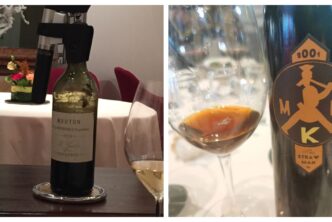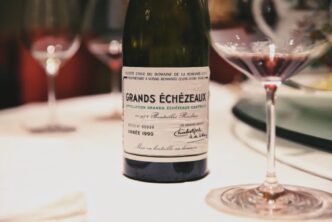Clape 2014 Cornas Rhône France 93

There is no greater name in Cornas today than that of Clape (Auguste Clape), one of the four or five greats of northern Rhône wine and one of the most revererd names in all French wine. The wines of this estate are sought by collectors everywhere and are a staple of many Michelin-starred wine lists all over the world, as they should be. They really are that good. The irony is the family isn’t even native from this specific neck of the French woods: they moved to the Rhône area following the terrible 1906 and 1907 grower strikes in the Languedoc (where they had been grape growers for several generations), with practically nothing left to show of their previous existence and had to start over. It is safe and only fair to recognize that he who made the Clape estate’s fame and fortune was Auguste Clape, who in 1949 married Henriette Rousset (daughter of Antoniette Frugier), whose family had small vineyard plots. Auguste was a hard-working man and he painstakingly built terraces along the steep western slopes of the Rhône River to ensure better farming and winemaking potential. But he was also a remarkably talented winemaker, able to coax unbelievable depth, concentration and refinement from the grapes of his Cornas vineyards. A former Mayor of Cornas, Auguste was also one of the first (if not the first) in the village to start estate-bottling, beginning in 1957 (like everybody else in Cornas, he previously sold his wine in barrels to various négociants, including Jaboulet). Over the years he began making a name for the estate’s very fine wines that slowly but surely found important export markets in the United Kindom and the United States. Clearly, Clape’s potential to make fantastic wines wasn’t hurt any neither by his decision to buy hundred years old vines from the other iconic Cornas producer, Noël Verset, when the latter decided to close up shop, nor by his making wine with the old, original, smaller-berried biotype of Syrah (nowadays a very rare grape most everywhere else). Clape sadly passed away in 2018, but his legacy is carried on very capably by son Pierre-Marie and grand-son Olivier; the former (who began at the winery in 1989) apprenticed long-term under Auguste, while the latter joined the fray in 2002. The pair continue to fashion marvelous wines Auguste would be proud of.
The 2014 Clape Cornas showcases the talent at work in the winery, given that making such a gem of a wine was not the standard coin of most other Rhône wines in this, not the easiest of, vintages. Good full purple-ruby. Offers a ferrous undertone to the inviting aromas of dark berries, cedar, Indian spices, and violet, plus a hint of cracked black pepper. Then very sleek and streamlined, with a refined mouthfeel and silky flavours of candied violet, juicy raspberry compote, and crushed rocks, finishing long with hints of cassis and blackberry reduction. The tannins are very fine indeed. Clape’s 2014 Cornas is delicious, but I warn readers that it is more typical of the 2014 vintage (that gave very nuanced, sleek wines) than it is of Cornas and its generally fleshy, rich and broad wines. In fact, had I tasted this blind, I think I would have very likely mistaken it for a bottling of Clape’s Renaissance Cornas, his more approachable, easygoing Cornas (made from younger vines in the best slopes and older vines from the lower slopes) that serves as a wonderful introduction to the house style (by contrast, Clape’s Cornas is made by blending the grapes from five to six or seven of the estate’s best and oldest Syrah plots). Try this red beauty with spicy dishes (including Asian-sauced meats), and anything grilled or barbecued. Drinking window: 2024-2032.
Aphros 2022 Loureiro Vinho Verde Portugal 92

Aphros is located in the heart of Portugal’s pretty Vinho Verde wine production area. One of the country’s pioneers in natural and biodynamic farming, founder Vasco Croft has gone out of his way over the years to search out old vineyards of local native grapes ideally matched to the granite soils. His wines are more classically dry than most others made in the area (for this reason, he likes to bottle his Vinho Verdes not in the traditional Riesling-type bottle but a Burgundy-shaped one). In a relatively short time, he has achieved noteworthy results that have added to the renaissance of Vinho Verde, a wine zone where many excellent wines are being made nowadays and that are, more often than not, very good value for money.
The Aphros 2022 Loureiro Vinho Verde Portugal is delightful. The colour is bright straw-green with hints of deeper yellow-gold. Inviting aromas of green apple, minerals and white flowers soar from the glass, with a hint of balsamic resins. In the mouth, it is very fresh and lifted, with laser-like acidity nicely lifting and extending the zingy citrus, nuanced tropical fruit and mineral flavours on the long finish. I don’t know if it’s because I know these vineyards are close to a bunch of weucalyptus trees, but I think I can also pick up a note of balsamic oils in the background. From the high-quality subregion of Lima, this an easygoing, delicious entry-level Vinho Verde that hits all the right chords: varietal accuracy (100% Loureiro), taste and price are just what the doctor ordered for thirsty palates and all those who don’t always want to mortgage the house when buying a bottle of wine. Although it doesn’t have the complexity to warrant a 92 point score, it’s so much fun to drink now, I’ll be generous and tell you to go ahead and start popping corks left and right (you can thank me later).Very much like a dry Riesling or a fresh Chablis, this will be murder with oysters and shellfish in general, as well as making a very fine aperitif all on its own. Drinking window: 2024-2026.

 English
English

